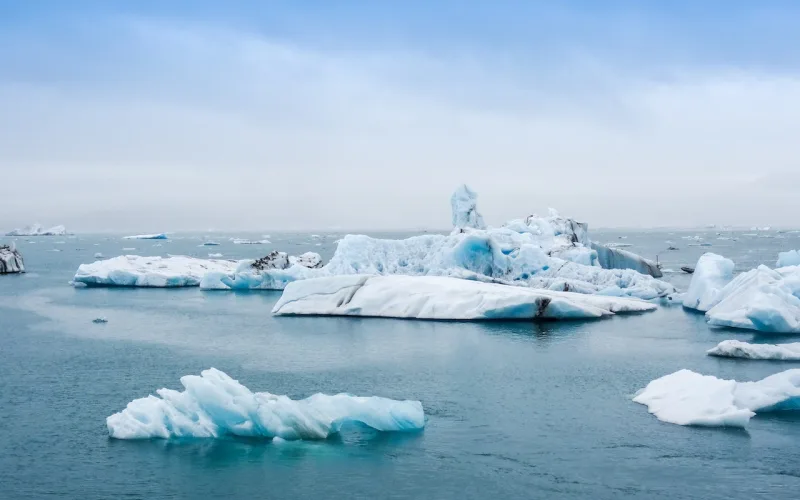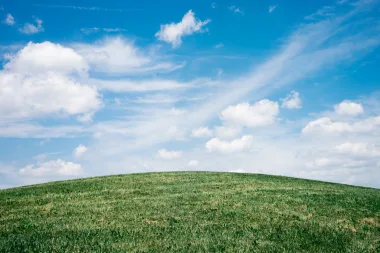Last Updated on September 6, 2023 by Ecologica Life
It is hard to turn on the news these days without hearing someone talking about climate change or global warming. The headlines are all about rising temperatures, fossil fuels, and climate debate.
Where do you stand on climate change? In 2023, many people are still divided on the issue. Many believe that climate change is real, others don’t. Why has it become such a sensitive issue?

We are constantly bombarded with information about the world’s temperature. What is often not talked about are the patterns of temperature change in our planet’s past. This helps to put this hotly debated topic into context.
Scientists say that global temperature have been rising over the past couple of centuries. But how does this fit in with the Earth’s natural cycles? And how did scientists’ figure this out in the first place?
In the age of information, it is hard to be sure of anything. Critical thinking is more important now more than ever.
This article will discuss the study of climate change, the data it reveals and how it relates to the ongoing climate debate. We will critically analyse the arguments for and against climate change.
We will look at the historical data on the global temperature of our planet. We will use this data to contextualise modern global warming.
Table of Contents
What is Global Warming and Climate Change?
Climate change is the notion that humans are changing the world’s climate by burning fossil fuels.
It should be noted that climate is different from weather. Weather is the forecast for a place over the course of a few days or, at most, a couple of weeks. It is nearly impossible to predict the weather more than 2 weeks in advance because of how unpredictable it is.
Climate looks at weather patterns over the course of many years. Although the weather can vary greatly from day to day, week to week and month to month. There are patterns that can be seen over hundreds, thousands or even millions of years.
How is the Climate Studied?
Climate scientists measure things like global temperature, the ratio of gases in the atmosphere, and climate systems.
How do scientists measure the global temperature? It is fairly easy to measure the temperature outside of your home. You just need to go outside with a thermometer. Do this enough times around the world, and you have an average global temperature (although collecting and interpreting this data consistently is a complex task).
In fact, scientists have been doing this since about 1850. Many weather stations in Europe and the United States were established since the 1800s. These stations have recorded temperatures throughout the year. So we have had solid data about temperatures from these regions for a long time.
But mercury thermometers were not invented until 1714. So how do we know what the global temperature was before then?
Climate scientists use a wide range of observations and measurements. It is a vast field that ranges from using the latest satellite observations to sampling prehistoric ice extracted from glaciers.
When scientists want to know what the climate was like before the 1800s, they use climate proxies. These can include corals, ice rings, tree rings and sediment cores. Chemical proxies include isotope ratios, elemental analyses and biomarkers. Taken together, these data can be used to understand the climate from millions of years into the past.
How do Climate Proxies Work?
So how do climate proxies actually work?
Lets take ice cores as an example. When snow falls, it traps little bubbles of air where it lands. If that snow doesn’t melt, but more snow falls, you can end up with layers of air bubbles going back 800,000 years.
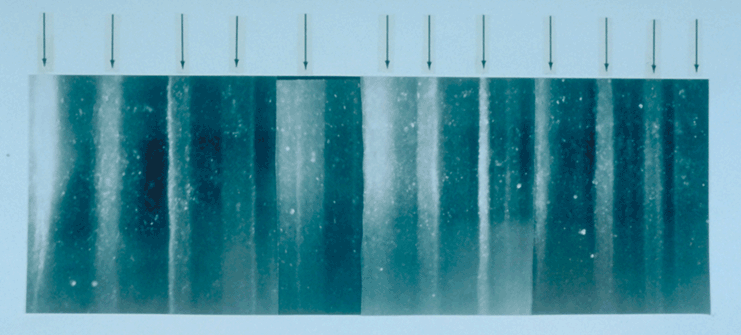
Scientists can melt these ice sections and release the bubbles that correspond to different years. They can then measure the ratio of gases released from the bubbles, which gives them the atmospheric composition of that time.
Because the atmospheric composition determines the global temperature (think of greenhouse gases), we can estimate the global temperature for that time period (with enough samples that is).
But what if we want to know the temperature before 800,000 years ago? One of the methods used to determine this is with foraminifera. These are single-celled organisms that make shells. These cells are slightly porous, so oxygen gets trapped in the shell, even after the foraminifera dies.

Using a similar process to ice cores, when scientists find foraminifera from a particular era, they can release the air and work out the global composition. They do this by looking at oxygen isotopes.
These are just two examples of climate proxies, and scientists use a wide range of proxies to study past climate.
What do We Know from Climate Proxy Data?

There is a certain degree of uncertainty with climate proxies. Findings get more reliable as we get closer to the present day. The Earth has undergone a lot of changes in the last 500 million years. At times it has been 14ºC hotter than it is today. Equally, it has also been 5ºC cooler than it is today.
Why do these fluctuations occur? Scientists aren’t 100% sure but there is evidence to suggest that these changes may be caused by the emergence of new life forms.
For example, the emergence of plants around 450 million years ago could explain the drop in temperature that happened then. Plants began to absorb atmospheric CO2 and pump out oxygen. Other changes could have been caused by volcanoes and meteor impacts, such as the one that wiped out the dinosaurs.
Although this graph gives us an extensive timeline, it actually does not show the full picture…
Interesting Trends
To get a better understanding of some of the trends that are occurring. We need to zoom in a bit.
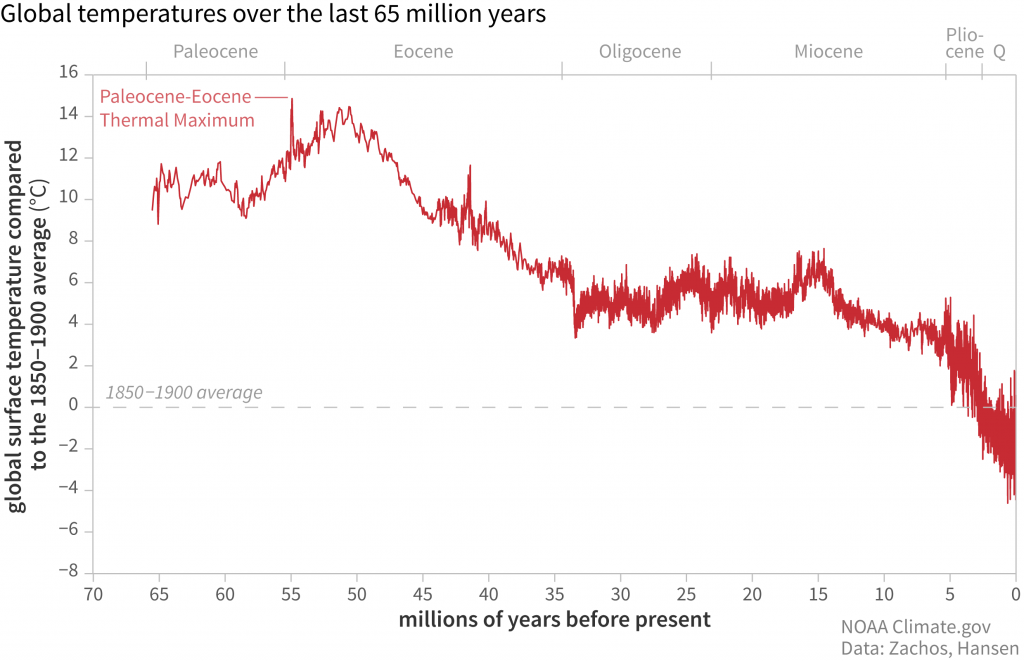
This graph shows global temperatures over the last 65 million years. Within the larger changes, there are many smaller fluctuations that you can only see if you zoom in again.
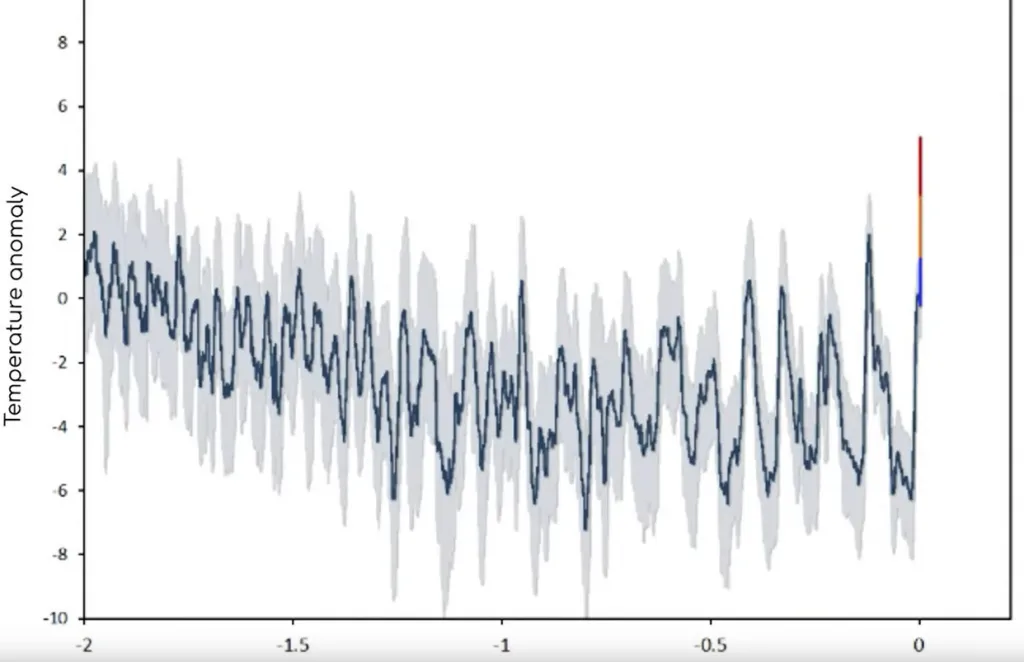
and again.

What you can see in the last graph are cycles of the last eight ice ages. Every time there was a big drop in temperature there was an ice age.
By the way, the Earth is in an ice age when there is snow covering the poles. This means that we are currently still in an ice age. During the last ice age, the ice reached to parts of North America and the UK.
It is normal for the Earth to go through such cycles. Some of these cycles are known as Milankovitch cycles. There is a video about them in the Additional Resources section if you want to know more.
All you need to know is that the earth goes through cycles. These cycles happen over the course of tens of thousands of years.

What we see in the graph is the rise in temperature after the last ice age.
All of human history has taken place in the upper part of the graph. The last 10,000 years or so. Civilisation as we know it has only existed in this time frame. The rise of agriculture and trade began around 6000 years ago.
This period is known as the Holocene epoch. If you look right at the end, you can see a sudden rise, which is not so usual.
Credit: Phys

What is concerning about this last graph is not the warming trend. As you may have noticed, the Earth undergoes temperature changes during its lifetime. Some of them are quite extreme.
However, the temperature changes that do happen, happen over thousands, or even hundreds of thousands of years. Now we are seeing rapid temperature changes that have happened in 100 years. From what scientists understand, this is not associated with the Earth’s natural cycles.
Models predict that the Earth will warm by between 2 and 6 degrees Celsius over the next century. Data from the past suggests that it took about 5000 years for the planet to warm by 5 degrees. This new predicted rate is at least 20 times faster.
The climate in the human lifetime has been a relatively stable one. It has allowed us and other life to grow and flourish. Species need time to adapt to temperature changes over thousands of years or they face extinction (think of how the woolly mammoth became today’s elephant). We are no different.
The Earth is not in danger from rapid global warming, but we and other life are.
What is Causing the Rapid Temperature Rise?
Global temperatures started to rise sharply around 1850, when the Industrial Revolution began in many countries. This is when we started burning fossil fuels on a massive scale. It was also about the same time that CO2 levels started to rise. This is because we were releasing carbon into the atmosphere.

Ice core data show that CO2 and methane levels in the atmosphere are at the highest they have been in the last 800,000 years.
The rise in CO2 is in step with the rise in global temperatures. Why is this?
The reason is because CO2 is a potent greenhouse gas. Greenhouse gases are responsible for trapping the Sun’s heat and keeping the world warm. Sunlight passes through the atmosphere, but the heat reflected from the Earth’s surface is trapped by the greenhouse effect.
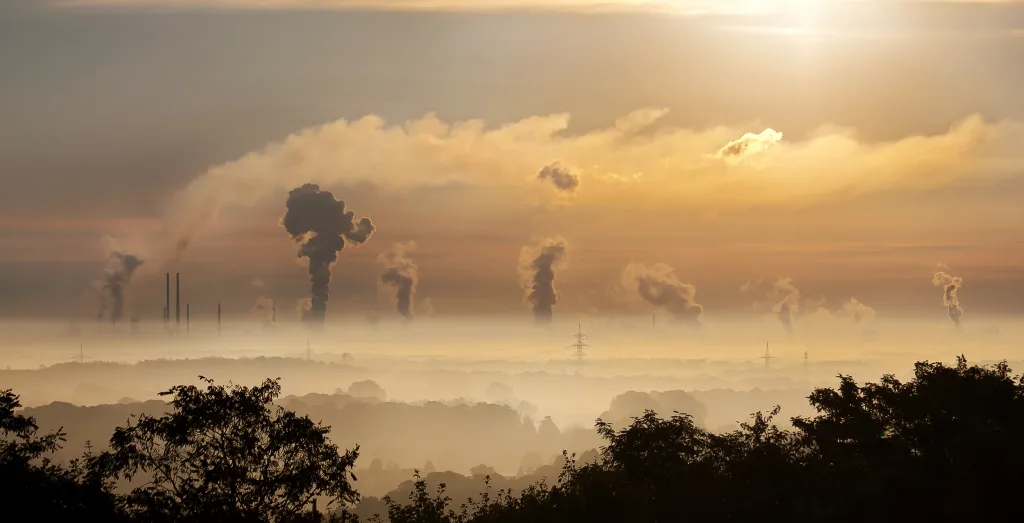
The Intergovernmental Panel on Climate Change (IPCC) confirmed in its 2021 report that there is no doubt that humans have caused this rise in global temperatures. With our factories, cars, planes, and their greenhouse gas emissions.
We don’t have to feel ashamed or guilty. We have used fossil fuels to bring us into a new technological age. But we now know for certain that we are influencing on the atmosphere that will endanger life on this planet. So, we should do something about it.
Keep in mind that we are not the only species to have an impact on global temperatures. Remember that when plants first appeared, they may have caused temperatures to drop rapidly by absorbing CO2 from the atmosphere.
Solutions
Because CO2 is the biggest contributor to climate change, followed by methane. A key solution is to achieve net-zero carbon emissions as soon as possible. Many countries have already made the pledge to achieve net-zero by 2050.
Carbon capture technologies are also in development. Project Longship in Norway is already in operation. It aims to take carbon from the atmosphere and store it underground.
Forests are a natural carbon sequestration technology that have been around for longer than us. Reforestation can not only help mitigate global warming but can also help prevent biodiversity loss at the same time.
The IPCC says that if such practices like these are widely adopted, we can stop and even reverse global warming. We can also stop other problems such as ocean acidification, which is killing shell life and coral reefs. Unfortunately, the rise of sea levels will likely be with us for thousands of years to come.
According to the IPCC reports, we are past the limit of the 1.5ºC increase. We will need to make rapid changes in this decade if we are to limit the increase in global temperatures to 2ºC.
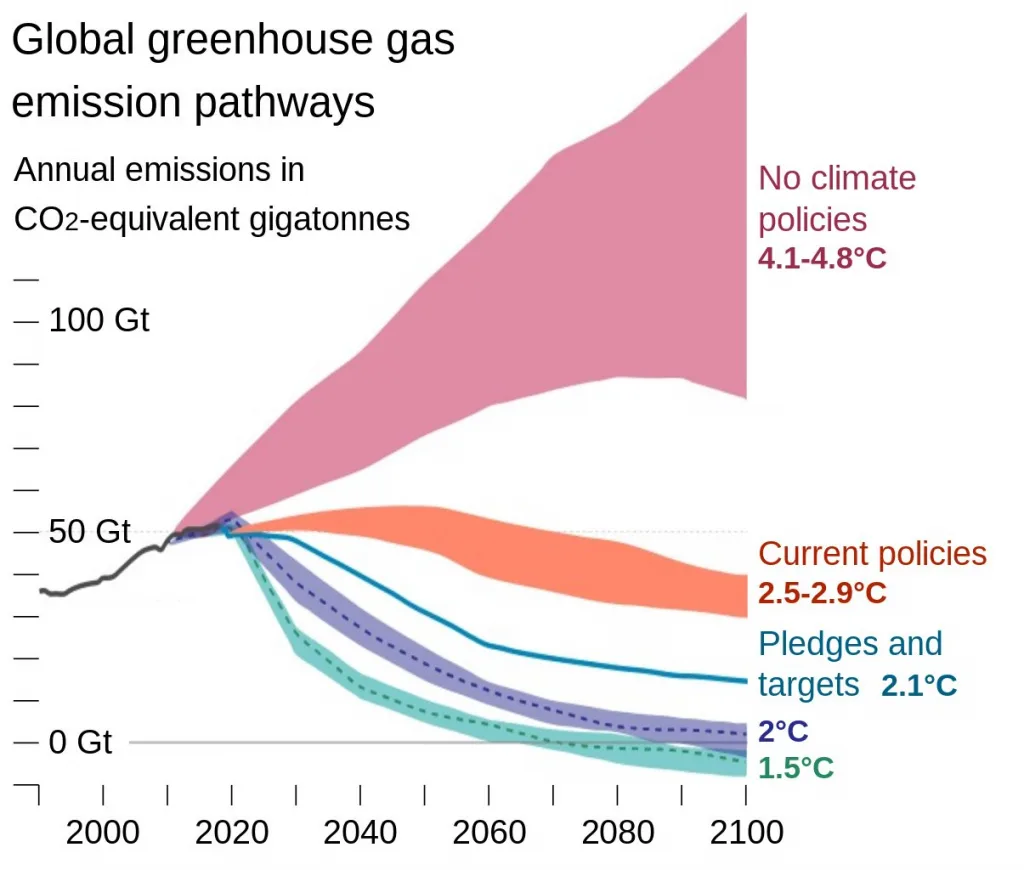
Should You Offset Carbon Emissions on Airlines?
Tips to Reduce Your Carbon Footprint.
Arguments Against Climate Change
The topic of climate change is full of misconceptions and arguments that often muddy the waters. This makes it difficult for the public to separate fact from fiction.
In this section, we’ll address some of the most common counterarguments.
It’s Just a Natural Cycle
One of the most frequently heard arguments is that the Earth has gone through periods of warming and cooling in the past. Therefore, the current changes must be part of a natural cycle.
It’s true that the Earth’s climate has varied over geological time scales. But the rapid warming from of the past 150 years does not align with any known natural cycle. Cycles such as the Milankovitch cycles operate over tens of thousands of years.
Moreover, we can directly attribute the elevated levels of CO2 and methane to human activities.
Scientists Don’t Agree
Another common myth is that there’s a significant divide within the scientific community on climate change. According to multiple studies, around 98.7% of actively publishing climate scientists agree that climate change is happening and is primarily caused by human activity.
The ‘debate’ is often amplified by the media, but in the realm of scientific research, there is a strong consensus.
It’s Too Expensive to Tackle Climate Change
There’s a concern that taking action to mitigate climate change would negatively affect the economy. However, this argument fails to consider the cost of inaction. Extreme weather exacerbated by climate change cost economies millions. Not to mention the economic cost of pollution.
When you weigh these costs against the investment required for sustainable development, the latter makes more economic sense in the long run.
Climate Change Will Have Some Benefits
Some argue that warmer temperatures could bring about benefits. Examples include fewer winter deaths and increased agricultural yields in certain regions.
While localised benefits might occur, they are far outweighed by the negative impacts. These include extreme weather events, sea-level rise, and loss of biodiversity.
Plus, any agricultural gains are likely to be offset by changes in precipitation and an increase in pests and diseases.
The above counterarguments mentioned do not stand up to scientific scrutiny. They often serve to delay necessary action to address this global issue.
Conclusion
The discourse on climate change is often charged with emotion and divided opinion. This is why understanding the science is crucial.
From climate proxies like ice cores and foraminifera, to modern measurements showing an unprecedented rise in global temperatures and CO2 levels. The evidence overwhelmingly supports the reality of human-induced climate change.
While it’s true that the Earth’s climate has always been subject to natural cycles, the rate of current change is unprecedented. Moreover, the near-unanimous scientific consensus is that this change is largely driven by human activity. Specifically, the emission of greenhouse gases.
This article is not meant to cause alarm or give you eco-anxiety. We just wanted to explore the data with you, the reader, in an unbiased way. We at Ecologica.life believe that we can achieve net-zero at no negative cost to anyone.
Honest conversation, innovation, and collaboration will be the driving forces that lead us into a sustainable future. One that is in harmony with the planet and those around us.
To learn more about climate change, please see the additional resources listed below.
Additional Resources
Attribution of recent climate change
Public opinion on climate change
Evolution of global temperature over the past two million years.
Guide to the Air Pollution Crisis.
